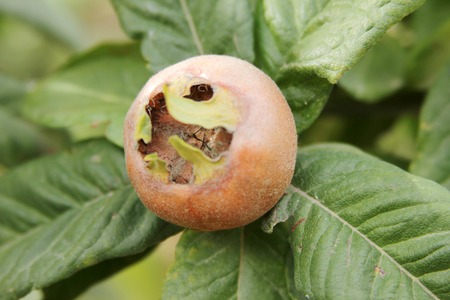
The Medlar (Mespilus germanica) is a self-fertile tree with a spreading habit, white blossom and offers us highly attractive autumn foliage. The fruit is collected in late October or early November and left to ‘blet’ or overripen during storage before cooking. It is an excellent late-season fruiting tree which complements the quince.
The fruit is ideal for jams, compotes and confectionary.
Growing Medlar
The tree is tolerant of most soils and light shade. It does not like chalky or poorly draining soil. Avoid exposed sites as wind and frost can damage flowers and foliage. The tree must be allowed to develop a strong, straight, clear trunk to support the spreading crown. Trees grafted on semi-dwarfing Quince C will be the most compact, growing to about 4m (13ft) in height and spread.
Cultivars
The ‘Dutch’ is a spreading tree producing large fruit. The ‘Large Russian’ is compact, producing larger fruit than the ‘Dutch’ and with exceptional flavour. The ‘Nottingham’ has an upright habit producing smaller fruit with good flavour. The ‘Royal’ has a fairly upright habit, producing medium-sized fruit.
The Sibley’s Patio Medlar is a new dwarf selection growing to 90-120cm (3-4ft).
Leave a Reply